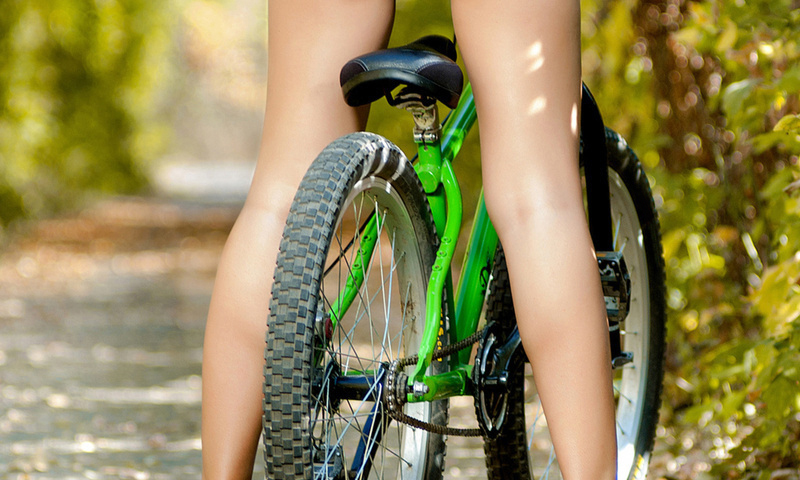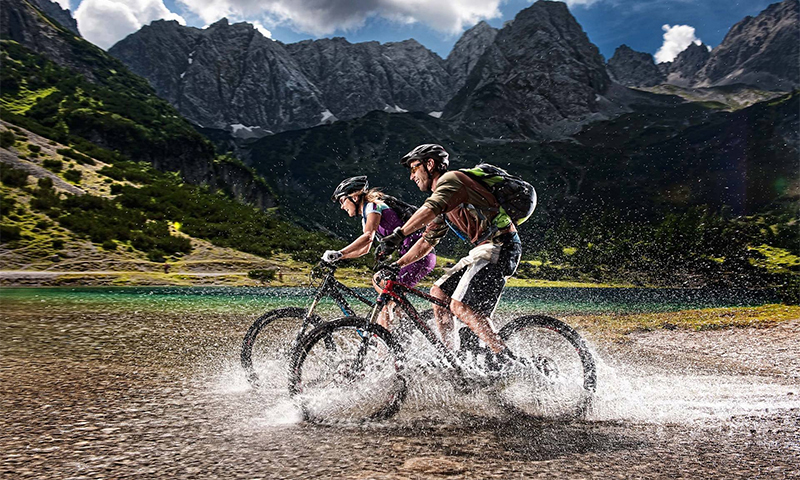If you are tired of just driving around the well-groomed alleys and you want a real extreme, first you have to buy a mountain bike. Any off-road, bumps, pits, and springboards can do this technique - there won't be enough adrenaline. However, the family of mountain bikes is so extensive and variegated that it’s difficult to make a choice without throwing out a couple of unsuccessful ones before that. To simplify your task, we have prepared a guide that will help you immediately buy the "right" MTV, and not what the seller is selling.
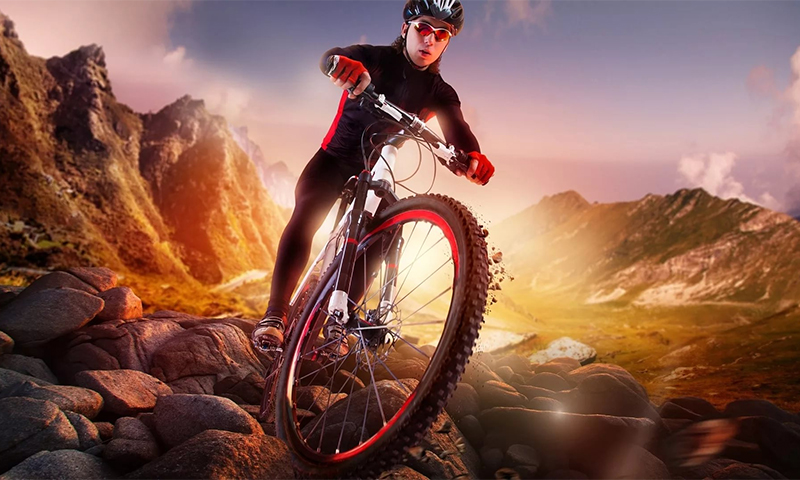
Content:
The best manufacturers of mountain bikes - which company to choose
The more famous the name on the frame, the more expensive the unit. You pay this price for guaranteed quality and reliability of your mountain bike.
Many companies are engaged in the construction of mountain bikes, but the best of them are:
- Scott;
- Author;
- Trek;
- Giant;
- Specialized;
- Merida.
An overview of the most interesting models from these companies can be found in ours. mountain bike ranking. But the choice of MTV requires an individual approach, so before buying you should study all the characteristics of the bike you like.
The principle of operation and the device of a mountain bike

Mountain biking is not much different from ordinary bikes: the same frame, steering wheel, two wheels and pedals as other models.
The difference is only in the features of their design and characteristics:
1. The frame - necessarily goes strengthened, with highly lifted carriage. May have suspension on the rear wheel.
2. Power plug - almost always cushioned, with a good stroke of 80-100 mm.
3. The steering wheel is often with a long reach, which provides the torso of the athlete when riding.
4. Wheels - always go large diameter (at least 26 ″). This allows you to overcome any obstacles on the track.
5. Brakes - in no case foot. There may be pads, but more often used more reliable disk nodes, "borrowed" from motorcycles.
6. Pedals - wide and non-slippery, preferably with foot locks.
From the usual mountain bike bikes also distinguishes the presence of the transmission - a set of variegated stars, on which the switch throws the chain.
By changing the gear ratio, you can increase the speed of movement of the apparatus or facilitate the ascent of the mountain, without exerting additional effort. To do this, it is enough for the cyclist to shift the gear using a special mechanism on the steering wheel (presser foot or swivel gripshift).
Types of mountain bikes
All mountain (all terrain vehicles)

Bikes of this type are used for active, but not extreme skiing along any impassable road up to rocky slopes. In most models, the frames are made of steel or aluminum alloy, less often - carbon.
In addition to the cushioned plug, there is also a rear suspension for damping shocks and vibrations on rough terrain. The wheel diameter is standard for mountain bikes (26-28 ″), the brakes are installed the most reliable - disk hydraulics.
ATVs are equipped with a transmission not less than 15 speeds, have a curved steering wheel and weigh about 13-15 kg.
Pros:
- A sufficient number of speeds;
- High permeability;
- Durable, but at the same time lightweight frame;
- Ultra-reliable brakes;
- Smooth stroke due to two suspensions.
Minuses:
- High price;
- Not suitable for racing and aggressive driving.
HS bikes for cross-country

The most common models of mountain bike, suitable for aggressive driving on rough terrain, and for high-speed movement on a flat track.
In the design of cross-country bicycles, lightweight hardtail frames are used with shock absorption only on the front fork.
Wheels on such bikes are large and wide, with a pronounced tread pattern, which allows them to keep well on loose soil and dirt. Brakes can be installed any, but the transmission must have at least 21 gears.
Pros:
- Big and "tenacious" wheels;
- They are universal - they show themselves well both on a cross-country road and in the conditions of a city;
- Many speeds;
- Relatively light weight;
- The front suspension softens well when hit on obstacles and jumps;
- Cheaper than other types of mountain bike.
Minuses:
- A lot of fakes under HS, transmission of which does not meet the requirements of a real cross-country.
DH - downhill models
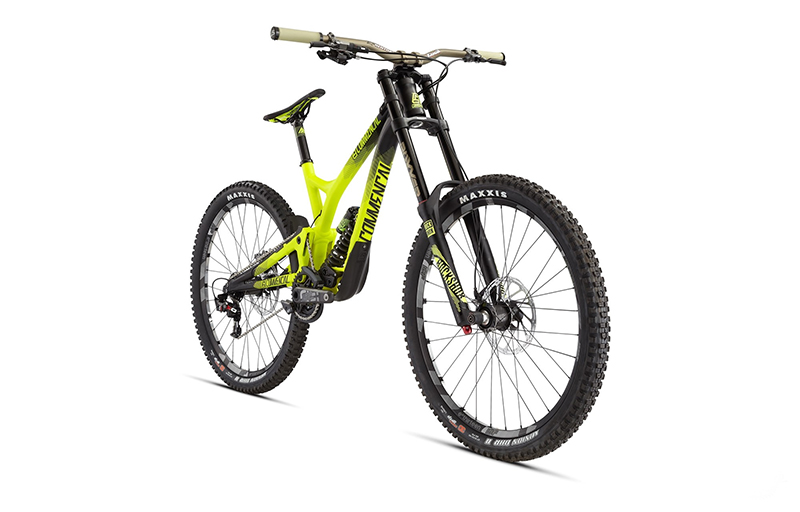
Like All mountain, downhill bikes are full suspension. Only they are significantly heavier, since they are designed for high-speed descents on uneven track. Weight DH-bikes is 15-22 kg.
These MTV have the largest fork travel (from 180-200 mm), but the number of gears does not exceed 10. The diameter of the wheels is 26 inches.
Pros:
- The softest move;
- The wheels are large enough to overcome the obstacles of the mountain road, but they are maneuverable;
- The most reliable and "responsive" brakes;
- On the descent develop tremendous speed.
Minuses:
- Very expensive;
- Heavy;
- Not intended for driving on a flat track - they take a lot of power when pedaling.
MTV for trial
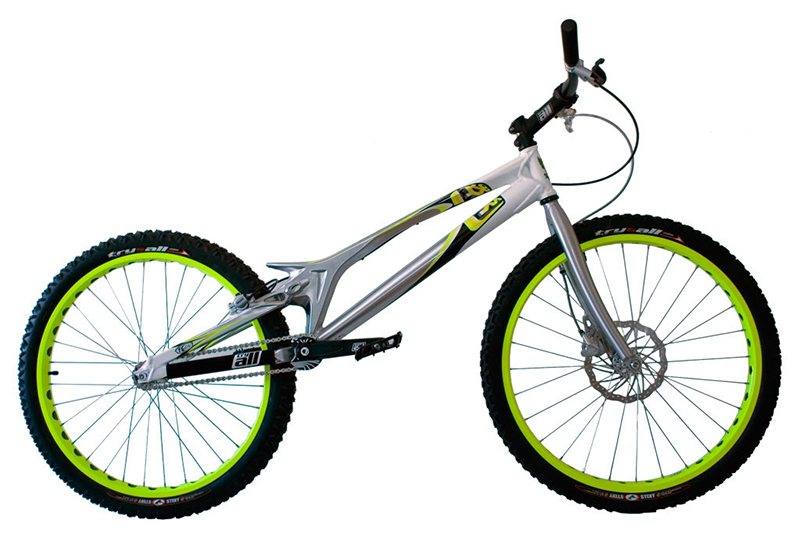
Purely mountain bike tricks with a light but sturdy aluminum batting frame and a removable seat (or no one at all). Designed for one single discipline: trial, that is, to overcome a series of difficult obstacles directly on the bike - without touching the ground with their feet.
In these bikes there are no speeds and depreciation. The wheels are usually small and maneuverable (20 inches in diameter) - drum brakes are installed directly on both.
Pros:
- Ideal for spectacular stunts;
- Very light (from 7 kg), but durable due to the reinforced frame design;
- Compact and maneuverable;
- Relatively inexpensive.
Minuses:
- Only for stunt riding;
- Absolutely no depreciation.
Universals
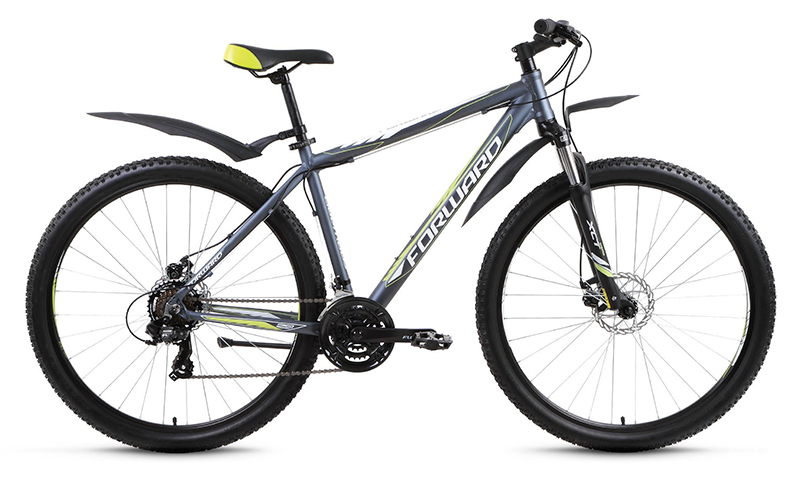
These bikes can be called "mountain bikes for the city." They have everything that MTV relies on, but the transmission is usually simpler, and the frame shape is slightly different, providing a more comfortable fit.
Universal bikes on serious tracks are not designed, but in the conditions of domestic off-road better they are not found. As a rule, these are hardtails, similar to those used in cross-country, only budget ones.
Pros:
- Durable and not very heavy frame;
- Comfortable depreciation forks;
- A decent set of gears, thanks to which it is good to lift;
- Relatively low cost as for MTV.
Minuses:
- Not suitable for professional sports;
- Often equipped with cheap tourist, and even pleasure transmission;
- Most models come with rim brakes.
Mountain bike selection options
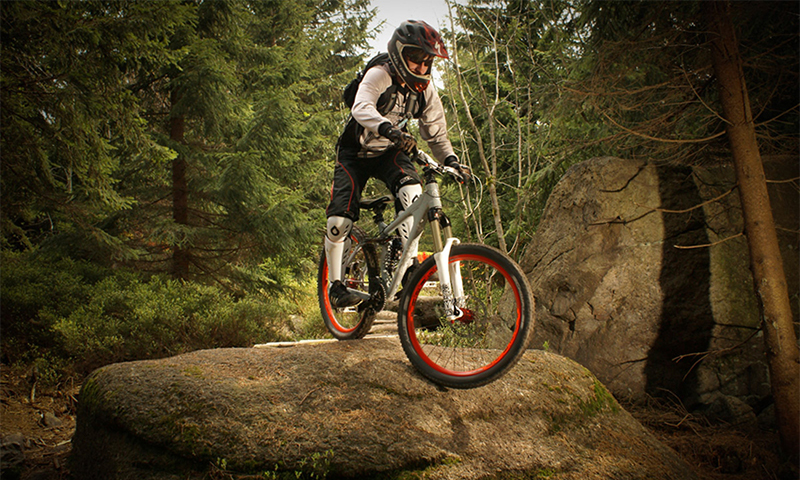
Size
The first thing to determine when choosing any bike is the size of the frame that fits your height.
The numbers below will help you navigate:
1. XS (up to 14 inches or 35 cm) - frames of this size are suitable for children and teenagers from 135 to 155 cm.
2. S (16 ″ or 40.6 cm) - for low athletes with a height of 150-165 cm.
3. M (18 ″ or 45.7 cm) is the best option for an average person 165-178 cm.
4. L (20 ″ or 50.8 cm) - for tall cyclists from 170 to 185 cm.
5. XL (22 ″ or 55.8 cm) - very large frames for people up to 195 cm tall.
6. XXL (24 ″, 61 cm) - an option for those who are above 190-200 cm.
Frame material
One of the most important parameters on which the weight, durability and cost of a mountain bike depends.
Today, manufacturers offer a choice of such options:
1. Steel is the cheapest material, but such bicycle frames have their advantages. They are durable, easily repaired and absorb vibrations well. The disadvantages are high weight and corrosion susceptibility.
2. Chromomolybdenum alloy - gradually displaces ordinary steel, because with the same strength has a slightly lower weight and better corrosion resistance.
3. Aluminum - such frames are more expensive than steel, but are highly valued for their low weight and durability.
4. Titanium is an expensive pleasure, but there are simply no other disadvantages to titanium frames. They are light, strong, do not scratch and do not rust.
5. Carbon - it all depends on your budget. If you can afford an expensive mountain bike with a high-quality frame, its characteristics (as well as its price) will in no way be inferior to titanium. Cheap carbon is more likely to be something average between aluminum and steel, which is also not bad.
Wheels
The size of the wheels is chosen more for growth than for some other criteria, since all MTV are equipped with 26-inch rims by default. The increase in diameter is achieved by a simple thickening of tires, so that you can increase the permeability and height of the mountain bike yourself.
1. If you are tall you should get a model for 28 ″ or a Niner with wheels 29 ″
2. For teenagers they produce mountain bikes with rims 20-24 ″;
3. The smallest 20-inch is used in the bike trial.
For bicycle wheels it is equally important what they are made of and how. In the case of MTV, it’s better to immediately give up. Here, preference should be given to double aluminum rims and tires with deep or medium tread.
Depreciation
By type of frame depreciation, mountain bikes are divided into several main types:
1. Rigid is the least suitable option for mountain biking. There is no suspension at all, so these frames can only be used in trial.
2. Hardtail is the most common type of mountain bike with a hard “tail” and a shock-absorbed fork that reduces vibration loads on the hands.
3. Dvuhpodvesh - bike with shock absorbers on the front and rear wheels. There are also so-called soft-theyla - dvuhvodvesy with a minimum course of the seatpost damper.
When choosing a model with a damped front fork, pay attention to the magnitude of its stroke - the height of the obstacles that it can safely “swallow” will depend on it. The harder the track and the more aggressive the style, the bigger the number should be.
1. For cross-country, usually enough 80-120 mm;
2. For more severe disciplines 140-180 mm;
3. The most long-stroke forks put on downhill models (200 mm and above).
Those who ride on different tracks, should look at the models of shock absorbers with a rigid fixation LockOut. This will allow not to waste forces on the buildup of the fork on flat areas. The function of the preload will not be superfluous, that is, the ability to set a “zero” point of travel, taking into account the weight of the rider.
Be sure to ask what type of shock absorbers is on the selected bike. This will affect their work and the cost of the entire apparatus.
Popular options:
1. Spring-elastomer shock absorbers - can not boast a particularly large stroke, but are cheap.
2. Oil-spring - expensive, reliable and non-problematic. For mountain biking is better not to find.
3. Air - work well on small bumps, but with strong shocks can bleed the air. They require a special pump for adjustment, but they themselves are relatively inexpensive.
4. Oil-air - a compromise option with all the advantages of oil shock absorbers and the disadvantages of air.
Brakes
Mountain bikes use 2 types of brakes:
1. Rims (with pads);
2. Disk.
Rim clamp the wheel on both sides, slowing down its rotation. Such brakes are one of the cheapest and easiest to install, but they require frequent replacement of the pads and are not very reliable, especially if the wheel is wet, dirty or icy. When the rim is deformed, the work of the pads becomes completely ineffective.
The rim types include the following brakes:
1. Cantilevers;
2. Tick-borne;
3. V-Brake and Mini V-Brake;
4. U-brake.
Mountain biking discs are preferable, as only they can provide effective braking in all weather conditions.In such assemblies, the pads are pressed against the disk (rotor) attached to the wheel axis and are not in contact with the rim.
Disc brakes can be:
1. Mechanical - transmit force to the pads with a cable attached to the handle on the steering wheel. They are quite simple to maintain, but from time to time they require adjustment.
2. Hydraulic - all work is performed by a liquid medium, the pressure of which is created by special pistons. This is the most effective system that does not refuse, even in extreme driving conditions. But to adjust or restore such brakes "in the field" is almost impossible.
Transmission
The more gears on a mountain bike, the easier it will be for an athlete to adapt to changes in the route: uphill, downhill, and speedy driving on level ground.
1. In a good MTV, their number should not be less than 21;
2. For some disciplines (like downhill) the number of gears is not critical;
3. In trial models the transmission may be completely absent.
When choosing a mountain bike, it is important to choose the right class of switches - in accordance with your driving style and features of the tracks. Shimano Alivio, Deore or their analogues - SRAM X4-X5 is enough for urban wagons and cross-country bicycles. But the more serious the load on the device, the higher the transmission class should be.
Also, decide with which pickers you will be more comfortable to switch gears: with lever or pivoting. The first option is more convenient, although sometimes the transmissions can spontaneously be rearranged.
Which mountain bike to choose

1. For descents on the same mountains and hills at full speed, you need a special downhill model - a double suspension with a heavy steel or chrome-molybdenum frame and a long-stroke fork. Brakes - only disk hydraulics.
2. For extreme cross-races, take a hardtail XC on 26 wheels. The stroke of the fork is 100-150 mm - it is better that it is spring-oil or oil-air with adjustable preload. Choose the brakes disc, and only mechanical or hydraulics - decide for yourself. Pay special attention to the transmission: if you are not super-pro, the middle class will suffice. But look for a bike with the maximum number of speeds - at least 21-24.
3. MTV for the trial will help you to demonstrate your bike control skills and master the cool tricks. Buy a lightweight model with a carbon or aluminum frame on 20-inch wheels. Spending on expensive brakes does not make sense - enough rim V-brake pads.
4. If you need a bike that will show itself equally well both in the city and on a country road, you can buy an inexpensive hardtail-station wagon with a lockable spring-elastomer fork. Transmission tourist class - your ceiling, take something steeper does not make sense. Brakes are also better to take rims.
5. For travel and running "wild" tracks ideal MTV-SUV. This should be a two-suspension with a long stroke (about 180-200 mm) adjustable fork and disc brakes.
How much is a mountain bike
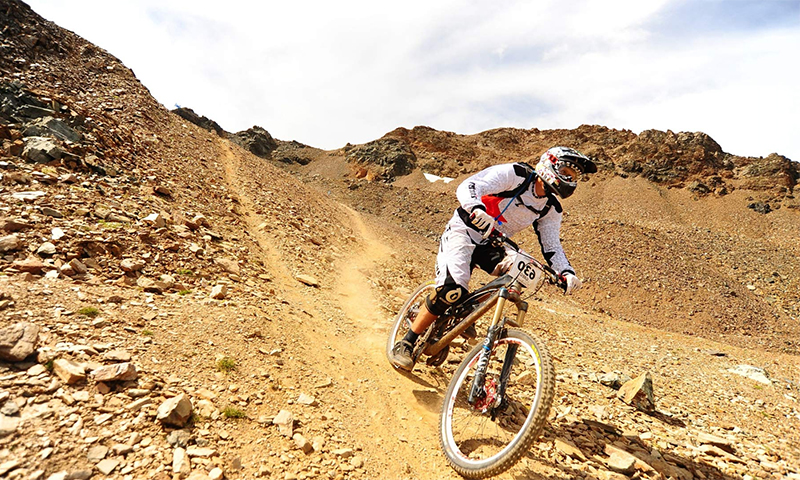
1. All mountain SUVs can be found at prices ranging from 30 to 600 thousand rubles. However, we do not recommend taking a dvuhpodvor cheaper than 60 thousand.
2. Good downhill models cost about the same - from 100 to 560 thousand rubles.
3. MTV for trial is the cheapest (8000-25000 rubles). Approximately the same cost universalists.
4. Cross-country models are priced from 25-30 to 670 thousand.
It will be interesting to friends too





